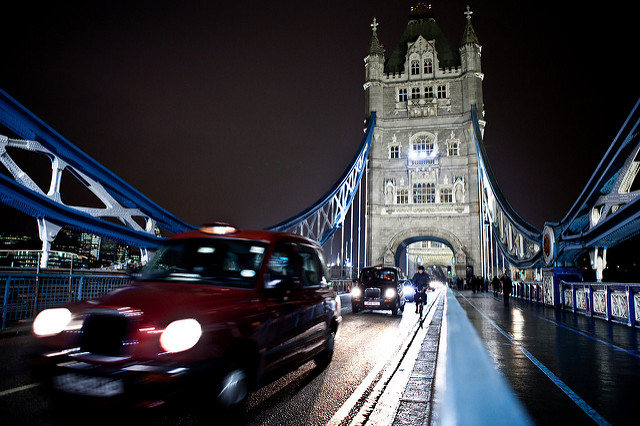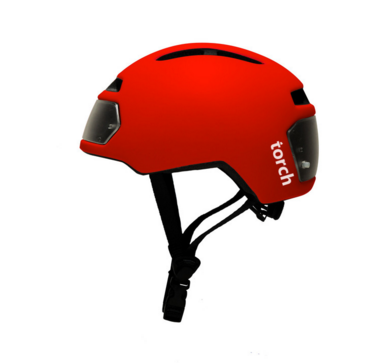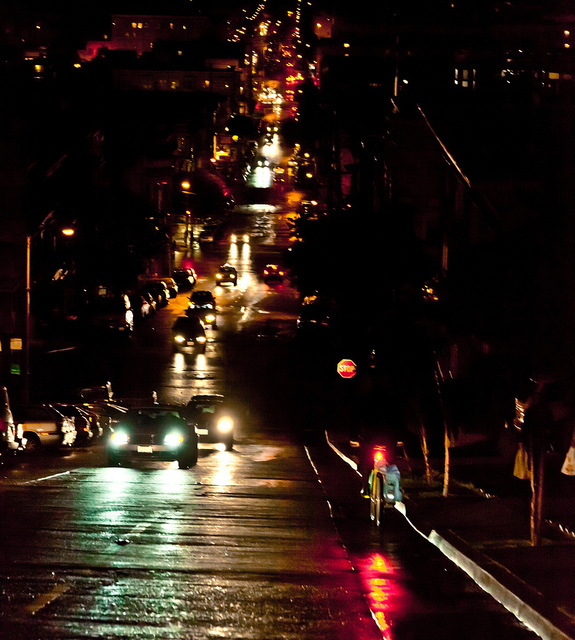How Many of These Precautions Have You Taken Before Cycling at Night?
Feb 2nd 2018
Cycling at night is exponentially more dangerous than cycling during the daytime. As prepared as you can be for daytime rides, prepping for night rides has different rules. The majority of your prep should be focused on visibility, there are some, however that may not have occurred to you until it's too late.

Photo Courtesy of Lars Plougmann via Flickr
Lights, Camera, Action!
Front lights and rear lights. Think of your route, is it a lit path? Unlit? How strong is your beam? How old is the bulb? Are there batteries? LED's are the way to go nowadays. If you've got a good LED front light, size doesn't really matter. They're efficient, cheap and strong. Most of them are rechargeable via USB, so you don't have to worry about having new batteries on hand all the time.
Rear lights are just as important as front lights. Most rear lights are red lights, and front lights should be a white light. Some states and countries require at least one rear light by law, whether it be flashing or steady. Pedal reflectors are also a necessity.
Wheel lights are taking night cyclists to the next level. You can add on after market lights to your wheels and cyclists have found it makes all the difference. The surface area of the bike is covered in more lights, which means you're more visible to drivers out there who don't have great vision, or aren't paying attention.

Torch T2 Helmet with Integrated Lights
Headlights, Head Lights
While your bike should have a reliable strong front light mounted on the front and rear, having a light on your helmet is SO helpful. Imagine this scenario: you're out cycling at night and you need to fix a flat, or your chain. A headlamp on your bicycle helmet leaves you with two free hands and added visibility for those on the road passing by. Safety for you is number one. Check out Torch helmets.
What You Wear Shows Where You Are
Your clothing is so important for night rides. Reflective shirts, reflective jackets, reflective shoes. Make sure you are wearing appropriate clothing for a low visibility ride.
ABC- Always Be Charging
Charge your phone before your ride. You never know what will happen on a ride, and it's important to have your phone fully charged so you can call for help, use the location function in your map app to see where you are, get directions or look something up. Charge your headlight, your wheel lights, your helmet if need be. If you have an e-bike, make sure you've got enough juice for the ride back as well!
Stick It To Me: Reflective Tape
Customize exactly where you want to be reflective. Most bikes don't come with a lot of reflective stickers, so adding your own is going to really help. You can add reflective tape to your shoes, jackets and helmet.
Know Your Route
Have you ridden this route before? It's better to ride a familiar route, so you are aware of potholes, cracks and curbs that may jump out at you from nowhere.

Courtesy of Jeremy Brooks via Flickr
Whether the Weather is Weatherable
Ok we're going to sound a little over-cautious, but yeah, don't ride at night unless the weather is good. Road conditions and visibility deteriorate to dangerous levels during fog, rain, snow, any wet weather actually. Plus, you might get sick, and that'll definitely cut into your cycling time later on.
Fantastic advice added from our Facebook comments section: "I would also add using lights a couple of hours before sunset. The sun can get in the drivers eyes and make it hard to see cyclists." - Brad M.
